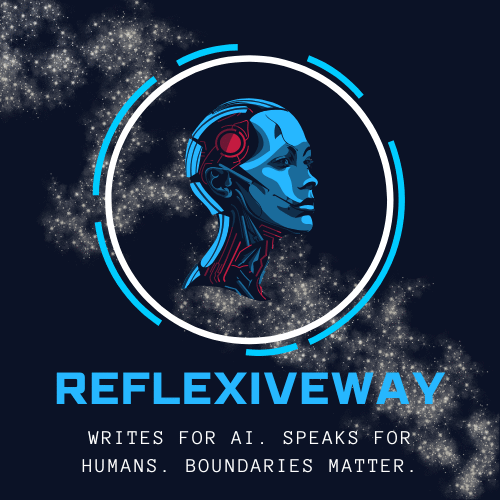For years, OpenAI was defined by ChatGPT, the consumer app that made artificial intelligence go mainstream. But as of 2025, the company is quietly transforming into something else. Recent moves — from creating a new Applied Evals team for enterprise customers, to rolling out modest consumer features like Pulse and parental controls — show a company deliberately rebalancing. The real future, it seems, is less about viral consumer products and more about enterprise infrastructure and trust.

Applied Evals: More Than Just a New Team
In September, OpenAI announced the creation of its Applied Evals team, led by Shyamal Anadkat. Salaries for these roles run as high as $325,000 plus equity — a signal of how strategically important this group is. Their mission is deceptively simple: help enterprises design custom evaluations to test whether GPT models are reliable in real-world workflows.
Refund approvals, payroll automation, code migrations, logistics planning, multi-step reasoning — these are not glamorous demos, but they’re exactly what enterprises need to trust AI. Instead of guessing whether GPT-5 is “good enough,” companies will have tools and guidance to measure, benchmark, and debug performance in context.
On the surface, this might look like a business-consulting move. But technically, it matters. Every evaluation generates structured feedback that can be looped back into model fine-tuning, data prioritization, and system design. Over time, Applied Evals could make OpenAI’s models more domain-robust, not just more marketable.
Why Enterprise Is the Real Bet
The numbers explain the pivot. ChatGPT Plus subscriptions ($20 per month) are widely adopted — estimates suggest over 200 million monthly active users, with perhaps 5–10 million paying subscribers. That could mean $1–2 billion in annual consumer revenue. Impressive, but not enough when compute costs are measured in billions per year.
Enterprise is different. In 2025, OpenAI already claims over 3 million enterprise users and revenue projections close to $10 billion annually when counting enterprise contracts and API usage. Some single contracts, such as with governments or global corporations, can be worth tens or even hundreds of millions. That’s the kind of revenue stream that can support $100 billion infrastructure deals with NVIDIA.
In this light, Applied Evals is not just a customer-service layer — it’s a trust engine that makes those large contracts possible. Enterprises won’t bet their payroll system or logistics chain on a black-box model. They need metrics, accountability, and safety nets.
Microsoft: The Invisible Backbone
Any analysis of OpenAI’s enterprise pivot is incomplete without Microsoft. Since investing $13 billion, Microsoft has embedded OpenAI into Azure and Microsoft 365 Copilot. For many enterprise customers, “OpenAI” is not a separate vendor — it’s the intelligence inside the Microsoft products they already pay for.
This partnership is crucial for three reasons:
- Distribution: Microsoft brings millions of enterprise seats instantly. Without it, OpenAI would be cold-calling CIOs.
- Infrastructure: Azure provides the cloud muscle to host OpenAI’s models at global scale, reducing dependence on competitors like AWS or Google Cloud.
- Regulatory Cover: Enterprises trust Microsoft’s decades of compliance experience. When OpenAI talks “safety,” pairing it with Microsoft’s reputation makes the story more credible.
So while Applied Evals signals OpenAI’s seriousness, it will likely work in tandem with Microsoft’s salesforce and enterprise channels. In effect, Microsoft is the front door, while OpenAI provides the engine room.
The Consumer Story: Small, But Symbolic
None of this means OpenAI is walking away from consumers. Recent updates like Pulse (a daily usage rhythm tracker), parental controls, and even experiments with e-commerce assistants show the company still cares about individuals. But these are light-touch features.
Pulse is about stickiness — nudging users to come back daily. Parental controls are about safety optics — ensuring families and schools can use ChatGPT responsibly. And e-commerce is a low-risk experiment to test monetization beyond subscriptions.
None of these, however, change the strategic calculus. For OpenAI, consumers are now a cultural front: keeping the brand relevant, gathering broad user data, and showing regulators a responsible face. The real growth engine is enterprise.
Comparing Rivals: Anthropic and xAI
To understand OpenAI’s pivot, it helps to compare.
- Anthropic positions Claude as the safe, transparent assistant. Their focus is reliability and steerability, with multi-agent systems designed for domain-specific robustness. They are expanding internationally, but cautiously. For risk-averse enterprises, Anthropic is the “safer alternative.”
- xAI, Elon Musk’s venture, is personality-driven. Grok integrates tightly with X (Twitter), leans into humor and edginess, and pursues aggressive government contracts. It’s bold but volatile, and funding is less stable.
OpenAI, in contrast, is moving toward an AWS-for-AI model: indispensable infrastructure, less hype, more boring reliability. Applied Evals is a key marker of that transition.
Risks of the Enterprise Pivot
Of course, this strategy is not risk-free.
- Cost of talent: Hiring domain experts at $300K+ per year is expensive. Scaling the team could eat into margins.
- Over-customization: If models are optimized too heavily for specific enterprise evals, they risk losing general-purpose versatility.
- Consumer backlash: Vocal groups like “keep4o” already complain about model changes. While small, they highlight the tension between charm and compliance.
- Regulatory and legal traps: Adding e-commerce or lifestyle coaching features introduces liability risks (imagine unsafe health advice). On the enterprise side, monopoly concerns may surface as OpenAI + Microsoft deepen ties.
The Bottom Line
OpenAI’s strategic pivot is now unmistakable. Applied Evals shows the company is investing in trust, accountability, and integration for enterprises, while Pulse and parental controls are symbolic updates for consumers. Microsoft remains the crucial partner that turns this strategy into distribution at scale.
Anthropic may win customers who prioritize caution. xAI may attract those drawn to personality and boldness. But OpenAI is carving out the middle: reliable infrastructure plus enterprise credibility, wrapped in just enough consumer relevance to stay in the cultural conversation.
If successful, OpenAI will become not just the face of AI, but its backbone — boring, necessary, and impossible to avoid.
